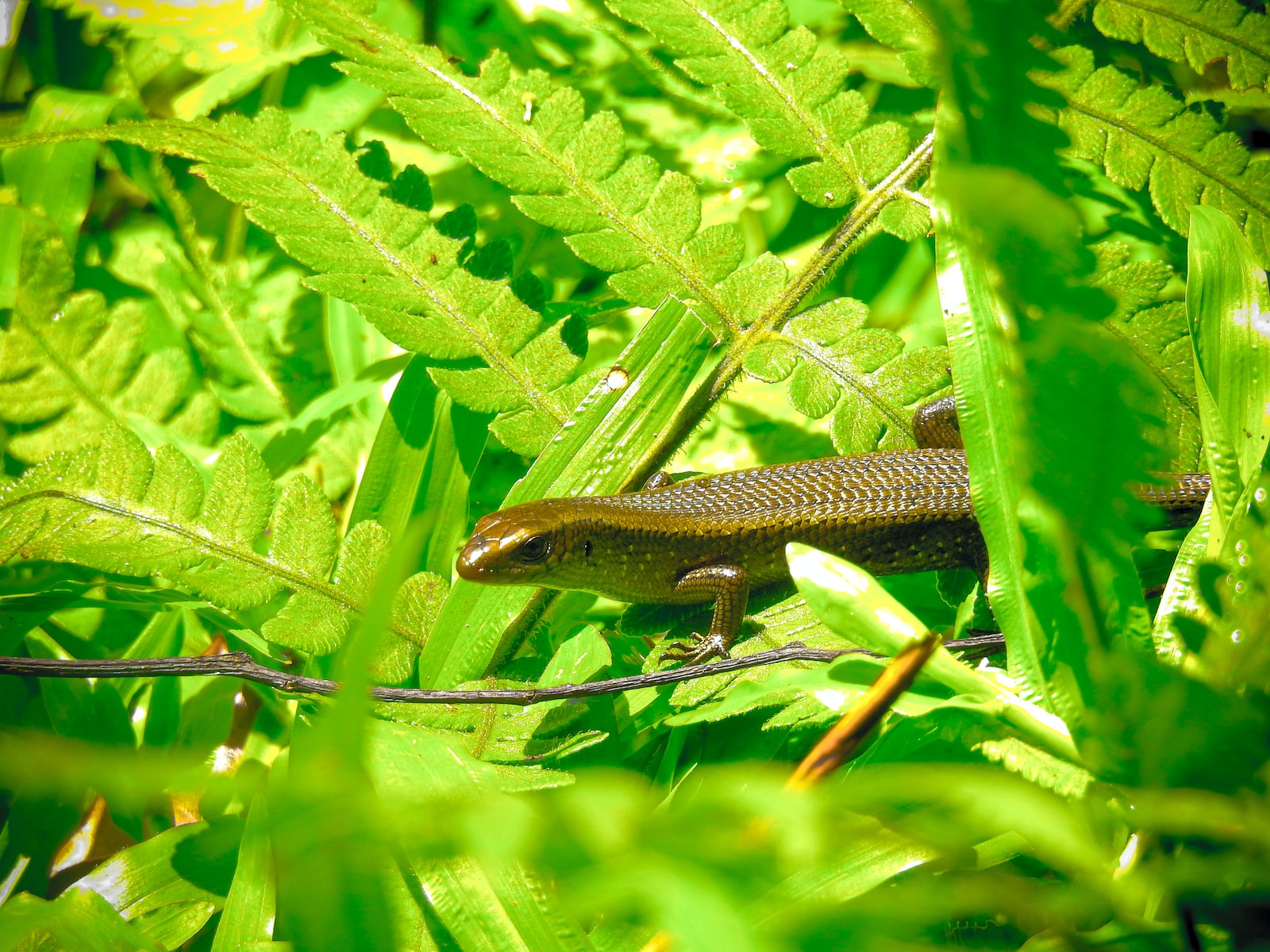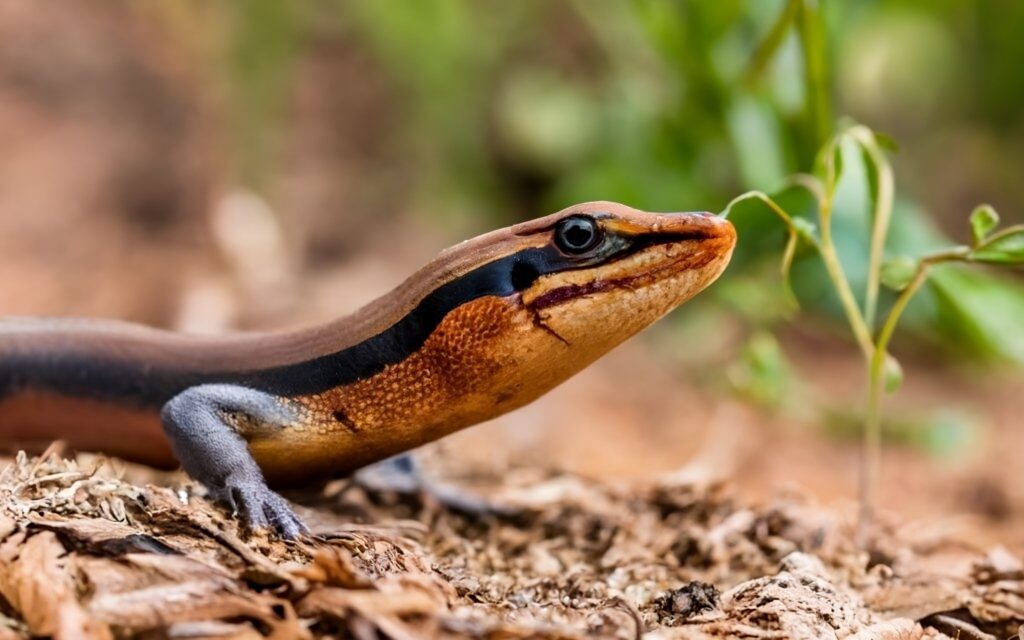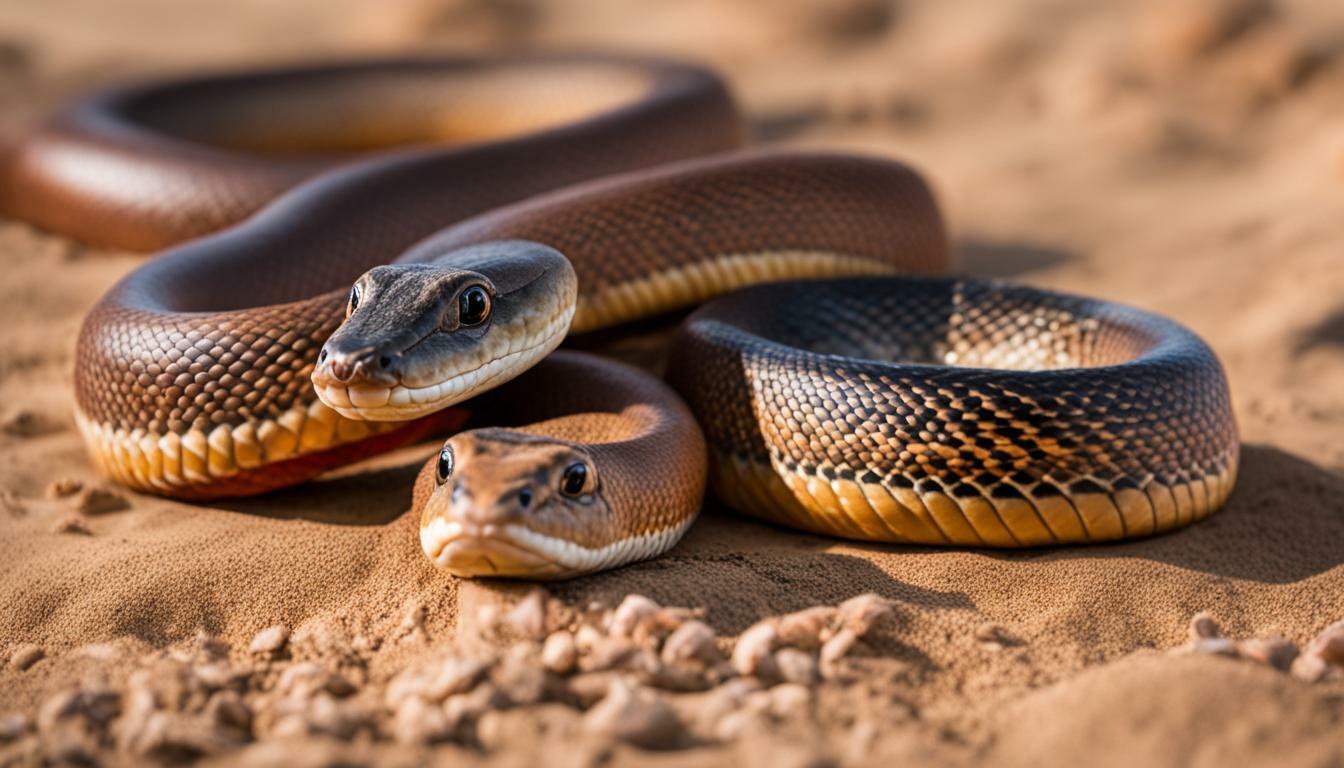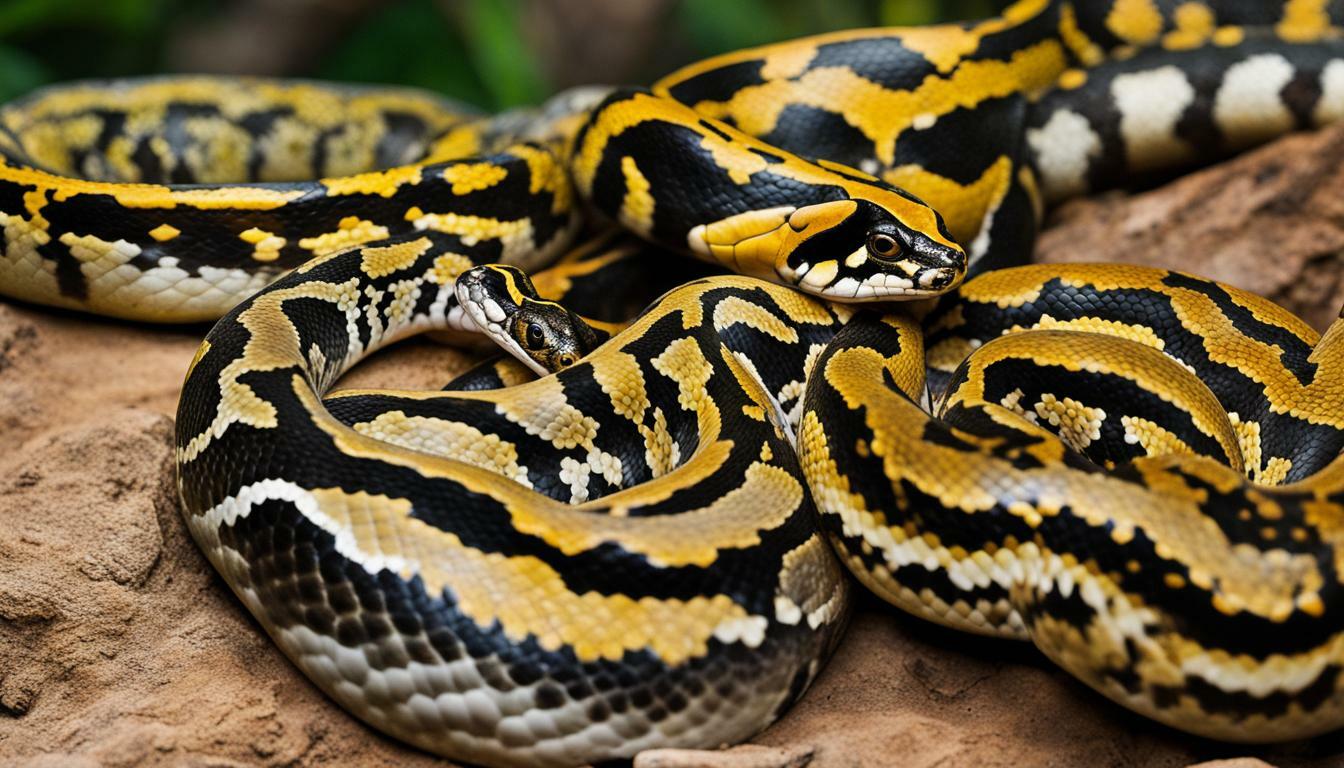Geckos and skinks are two of the most fascinating reptile species, often mistaken for one another due to their similar appearances. However, upon closer inspection, geckos and skinks have distinct characteristics that set them apart from one another. In this article, we will explore the key differences between geckos and skinks, including their physical features, behaviors, and habitats.
Key Takeaways:
- Geckos and skinks are both reptile species.
- Geckos have distinctive physical features, such as their sticky toe pads and unique vocalizations.
- Skinks are known for their smooth, shiny skin and long tails.
- Geckos and skinks reside in different habitats and exhibit different behaviors.
Understanding Geckos and Skinks
Geckos and skinks are two distinct species of reptiles that share many similarities, but also have several key differences. Understanding the characteristics of these two species can help you differentiate between them and appreciate their unique traits.
Gecko Characteristics
Geckos are known for their distinctive toes, which have adhesive pads that allow them to climb walls and ceilings with ease. They also have large, bulging eyes that are ideal for nocturnal activity, as well as soft, velvety skin that is covered in tiny scales. Some geckos are brightly colored, while others blend in with their surroundings for camouflage. They are found in a variety of habitats, including rainforests, deserts, and urban areas, and are known for their unique calls and vocalizations.
Skink Characteristics
Skinks are typically larger and sturdier than geckos, with smooth, shiny skin that is covered in larger scales. They also have shorter legs and a longer tail than geckos, and lack the adhesive toe pads that allow geckos to cling to surfaces. Skinks are also found in a range of habitats, including forests, deserts, and grasslands, and are known for their burrowing behavior. While some skinks are brightly colored, many have duller hues for camouflage.
Geckos vs Skinks
When comparing geckos and skinks, some key differences emerge. Geckos are generally smaller and more agile than skinks, with the ability to climb and cling to surfaces. Skinks are typically larger and more terrestrial, with a stronger focus on burrowing and digging. Geckos have distinctive toe pads that allow them to cling to walls and ceilings, while skinks lack this adaptation. Additionally, geckos are often brightly colored and vocal, while skinks tend to be more camouflaged and solitary.
Exploring Gecko Species
Geckos are a diverse group of reptiles, with over 1,500 species found all over the world. Some of the most popular gecko species among pet owners include Leopard Geckos, crested geckos, and tokay geckos.
Geckos are known for their unique physical characteristics, including their large, lidless eyes and the ability to climb vertical surfaces with ease, thanks to their adhesive toe pads. They are mostly nocturnal and feed on a variety of insects and small invertebrates.
Geckos can be found in a wide range of habitats, including deserts, rainforests, and even cold mountainous regions. Some species, such as the tokay gecko, are known for their aggressive behavior and loud vocalizations, while others, such as the leaf-tailed gecko, have developed unique camouflage to blend in with their surroundings.
| Gecko Species | Habitat | Behavior |
|---|---|---|
| Leopard Gecko | Deserts and rocky grasslands | Docile and easy to handle |
| Crested Gecko | Tropical rainforests | Nocturnal and arboreal |
| Tokay Gecko | Forests and urban areas | Agressive and vocal |
Overall, geckos are a fascinating group of reptiles with unique physical characteristics and diverse behaviors. Understanding the different gecko species and their respective habitats can help pet owners provide appropriate care and enrichment for their geckos.
Unraveling Skink Species
Skinks are a diverse group of lizards that belong to the family Scincidae. There are over 1,500 different species of skinks found across the globe, with a wide range of habitats and behaviors. These reptiles are generally small and have long, slender bodies, with smooth, shiny scales that are often colored in shades of brown, gray, or black.
Skinks are adapted to a variety of environments, from forests and deserts to mountains and grasslands. Some species of skinks are arboreal, meaning they live in trees, while others are burrowers, living underground. Some of the most common species of skinks include the Blue-tongued skink, the Five-lined Skink, and the Skink-tailed Gecko.
| Skink Species | Habitat | Behavior |
|---|---|---|
| Blue-tongued Skink | Australia, Tasmania | Diurnal, ground-dwelling, omnivorous |
| Five-lined Skink | Eastern United States | Diurnal, arboreal, insectivorous |
| Skink-tailed Gecko | Australia | Nocturnal, arboreal, insectivorous |
Skinks are known for their ability to shed their tails when in danger, a defense mechanism known as caudal autotomy. This ability allows skinks to escape predators and regenerate their tails over time. Additionally, some species of skinks are known for their bright colors and patterns, which serve as a warning to potential predators that they are poisonous or dangerous.
Overall, skinks are a diverse and fascinating group of lizards that have adapted to a wide range of habitats and behaviors. By exploring the different species of skinks and their unique characteristics, we can gain a better understanding of these reptiles and their place in the natural world.
Key Differences Between Geckos and Skinks
While geckos and skinks may look similar at first glance, there are several key differences that distinguish these two reptile species. Below, we’ll explore the disparities in their physical features, habitats, behaviors, and adaptations.
| Characteristic | Geckos | Skinks |
|---|---|---|
| Body shape | Slim, streamlined body with large, flat toes | Cylindrical body with small, clawed toes |
| Habitat | Primarily found in warm, arid regions such as deserts and tropical forests | Can be found in a wide range of habitats including forests, deserts, and grasslands |
| Behavior | Nocturnal and known for their ability to climb walls and ceilings using microscopic hairs on their toes | Diurnal and primarily ground-dwelling, although some species can also climb trees and rocks |
| Adaptations | Have specialized toe pads that allow them to stick to surfaces, vocalize using chirping or clicking sounds, and some species have the ability to detach their tails | Can shed their tails as a defense mechanism, have bony plates beneath their scales for protection, and some species have bright coloration as a warning to predators |
These differences highlight the unique characteristics and adaptations of geckos and skinks. While they may share some similarities, such as their reptilian nature and scaly skin, their diverse physical features and behaviors set them apart.
By understanding these key differences, you can better appreciate the diversity of these fascinating creatures and the important roles they play in their respective ecosystems.
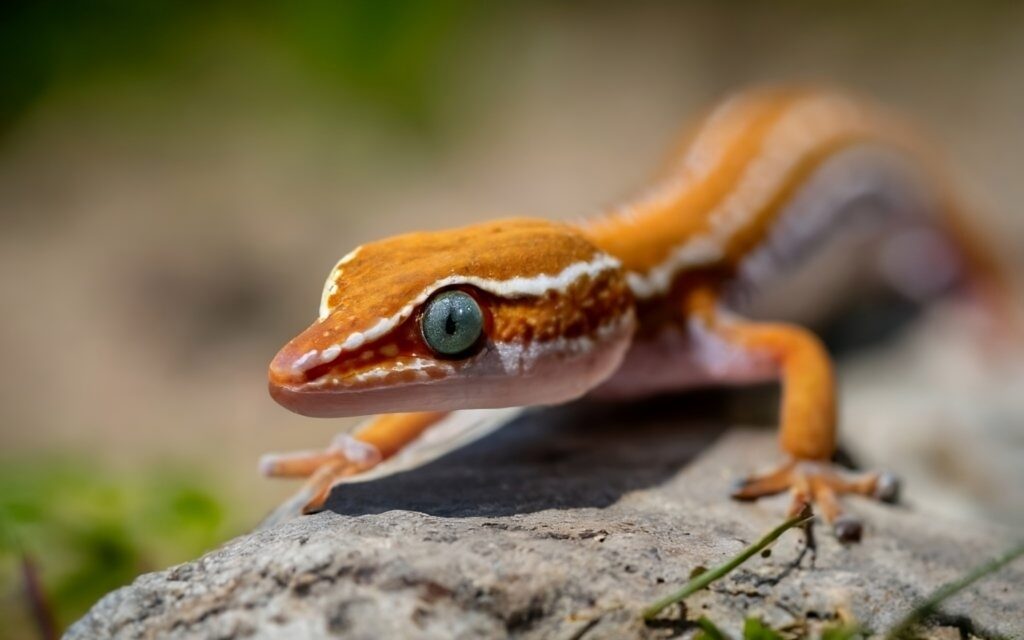 Difference Between Geckos and Skinks: Conclusion
Difference Between Geckos and Skinks: Conclusion
Geckos and skinks are both fascinating reptiles, but they have notable differences that set them apart. Throughout this article, we have explored the distinct characteristics of geckos and skinks, their diverse habitats and behaviors, and the unique adaptations of different species.
From their physical features and behavior patterns to their preferred habitats, geckos and skinks exhibit significant differences that make them easily distinguishable. For instance, geckos are known for their sticky toe pads, while skinks have smooth, shiny scales. Additionally, geckos are more commonly found in tropical areas, whereas skinks thrive in a wider range of environments.
Understanding the differences between geckos and skinks is essential for anyone interested in these creatures. By doing so, readers will gain a deeper appreciation of these fascinating reptiles and their unique attributes.
So, whether you’re a professional herpetologist or just fascinated by the world of reptiles, take the time to learn more about the difference between geckos and skinks. These amazing creatures are sure to captivate you with their diverse traits and adaptations.
FAQ
Q: What is the difference between geckos and skinks?
A: Geckos and skinks are both reptiles, but they have several key differences. Geckos generally have adhesive toe pads that allow them to climb walls and other surfaces, while skinks do not. Geckos also have distinct vocalizations, while skinks are typically silent. Additionally, geckos tend to have elongated bodies, while skinks have shorter, stouter bodies.
Q: What are the characteristics of geckos?
A: Geckos have a unique ability to climb walls and other surfaces due to their adhesive toe pads. They are often small in size and have distinct vocalizations. Geckos are found in various habitats around the world and can range in coloration and patterns.
Q: What are the characteristics of skinks?
A: Skinks have a more terrestrial lifestyle compared to geckos. They lack adhesive toe pads and are unable to climb walls. Skinks have shorter, stouter bodies and are generally silent. They can be found in a wide range of habitats, including forests, deserts, and grasslands.
Q: How many species of geckos are there?
A: There are numerous species of geckos, with estimates ranging from 1,500 to 2,000. These species vary in size, coloration, and habitats. Some popular gecko species include the leopard gecko, crested gecko, and tokay gecko.
Q: How many species of skinks are there?
A: Skinks are a diverse group of reptiles, with over 1,500 known species. These species exhibit a wide range of characteristics and can be found in different parts of the world. Popular skink species include the blue-tongued skink, five-lined skink, and great desert skink.
Q: What are the main differences between geckos and skinks?
A: The main differences between geckos and skinks include the presence of adhesive toe pads in geckos, their vocalizations, body shape, and climbing abilities. Geckos are known for their ability to climb walls, while skinks have a more terrestrial lifestyle. Additionally, geckos tend to have more elongated bodies compared to skinks.
 Skip to main content
Skip to main content